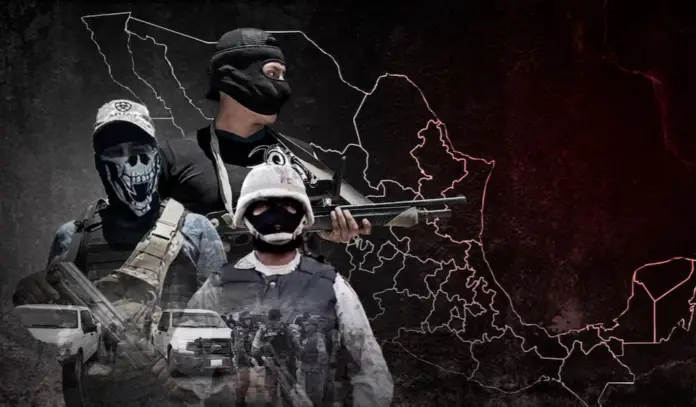The National Drug Threat Assessment 2025 report, published by the U.S. Drug Enforcement Administration (DEA), has documented the expansion and consolidation of three Mexican cartels in the State of Mexico. These are the Jalisco New Generation Cartel (CJNG), the Sinaloa Cartel, and La Familia Michoacana, which have been identified as terrorist organizations capable of exerting extreme violence, controlling communities, and infiltrating institutional structures.
Based on this U.S. report, these drug trafficking organizations in Mexico have carried out acts that include kidnappings, extortion, homicides, drug trafficking, and illicit financial operations. Therefore, the DEA has warned that their activities have affected both Mexico’s national security and public health and social stability in the United States.
CJNG: Territorial Presence and Sophisticated Financial Structure
The Jalisco New Generation Cartel has established operations in approximately 48% of the municipalities in the State of Mexico. Official data from the state Attorney General’s Office has confirmed its influence in areas of the Valley of Mexico and the south of the state. The group has also been linked to the trafficking of methamphetamine, fentanyl, and cocaine, as well as extortion, forced disappearance, and the execution of civilians.
The DEA has indicated that the CJNG has used front companies, fake real estate investments, and cryptocurrencies to launder drug proceeds. Its use of military-trained personnel has also been documented, which has increased its capacity for armed confrontation with local and federal authorities.
La Familia Michoacana: Regional Dominance and Local Economic Control
For its part, La Familia Michoacana has emerged as one of the most rapidly expanding criminal structures in Mexico’s second most populous state. Its presence has reached 60% of the state’s territory, including rural and urban municipalities and areas bordering Guerrero and Michoacán. Its most active branch, La Nueva Familia Michoacana (LNFM), a spinoff from the previous group and led by the Hurtado Olascoaga brothers, has expanded its operations to Mexico City and other parts of the central part of the country.
The group has maintained a financing scheme based on collecting fees, selling synthetic drugs, and forcibly taking over local markets. The DEA has described its operating model as paramilitary. That is, with hierarchical structures, systematic use of violence, deployment of high-caliber weapons, and visible propaganda in public spaces.
Sinaloa Cartel: Logistics, Alliances, and Targeted Violence
The Sinaloa Cartel has maintained active operations in the State of Mexico, although with less intensity than the other two groups. Its strategy has focused on logistical routes linked to international drug trafficking, money laundering, and human smuggling. The DEA has identified its presence in strategic access points such as areas surrounding Mexico City International Airport and corridors leading to the north of the country.
This organization has largely avoided open confrontations and preferred to consolidate local alliances through networks of intermediaries. However, it has resorted to targeted violence when it believes its control over routes or enclaves of high commercial value is threatened.
The DEA document has proposed a scenario in which the internal fracture of the Sinaloa Cartel, between Ismael “El Mayo” Zambada’s faction and that of Los Chapitos, could lead to a temporary alliance between the latter and the CJNG. This possible coordination has been interpreted as an attempt to strengthen drug exports to the United States and the flow of arms to central Mexico.
In this context, the State of Mexico has been identified as a key territory for these reorganizations, concentrating infrastructure, land connectivity, consumption centers, and areas of political influence.
International Outreach and Institutional Risk
The DEA has classified these organizations as threats with a global dimension. Both the CJNG and the Sinaloa Cartel have expanded their presence to more than 40 countries, with distribution, financing, and protection networks that have crossed continents. Their impact has reached electoral processes, local markets, and communities displaced by violence.

Source: infobae




